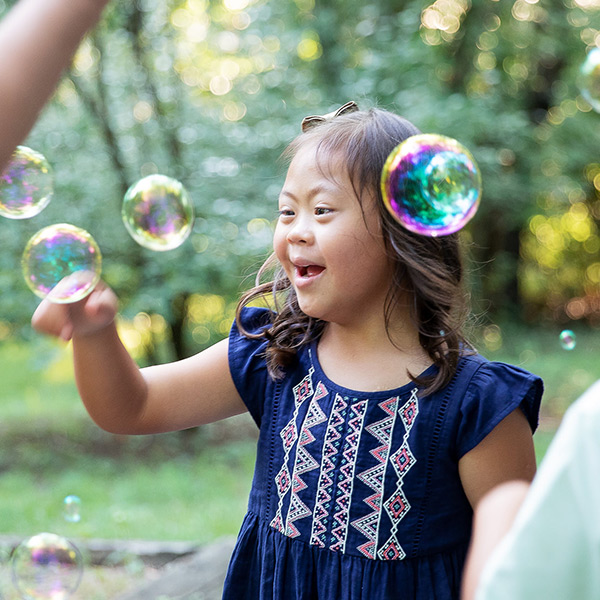Understanding TBRI® Principles With Special Insights From Marti Smith
Trust-Based Relational Intervention® (TBRI®) is a care model designed to help meet relational and developmental needs of children and youth impacted by trauma. TBRI considers the whole child—his or her brain, biology, behavior, body, and beliefs—and provides parents and caregivers with practical tools and insight to help their child(ren) reach his or her highest potential. And, perhaps most integral, TBRI has connection at its core—the truth that connection builds trust, and trust builds healthy relationships.
Developed by Dr. Karyn Purvis and Dr. David Cross of the Karyn Purvis Institute of Child Development (KPICD) at TCU, the TBRI model is built upon three guiding principles:
Connecting Principles: Create connections that disarm fear, gain trust, and enhance learning.
Empowering Principles: Strengthen learning and regulation by meeting a child’s physical and environmental needs.
Correcting Principles: Shape beliefs and behaviors effectively, so children feel safe, protected, and empowered.
Empowering Principles
One of the most important outcomes of Empowering Principles is to teach the capacity for regulation. These skills can be taught through modeling; practicing co-regulation; and by using physical exercises, daily routines, and/or nurturing activities. The goal is to give a child the tools needed to use their brains and bodies to keep their internal state regulated and balanced. This is learned through healthy relationships.
Our own personal past experiences and history will influence how we perceive a new experience. The brain develops in sequence and will heal in sequence. Therefore, a child’s ability to access any part of his or her brain that is not fully developed due to age or traumatic influence will be impaired.
Physiological (Physical/Internal) Strategies:
– Have your child’s physical needs been met?
+ Manage sleep, hydration, and blood sugar.
+ Meet nutritional needs.
+ Engage sensory needs by providing physical activity, at least, every two hours.
+ Teach regulation by modeling and practicing regulation skills in physical and/or nurturing activities throughout the day.
Ecological Strategies:
– How is the environment affecting your child? In what ways can you modify the environment to help your child?
+ Use daily rituals that are predictable.
– Create morning and evening routines and stick to those.
– Foster and model predictability in transitions (i.e. “in five minutes, we will …”).
– Develop awareness about the levels of sensory input—both for those who are sensory seeking and those who are sensory avers
– Consider noise levels, unfamiliar or strong odors, lighting, and so forth.
Practical Application
Questions & Reflections:
– Think of a time when you were safe, but you didn’t feel that way. Consider situations in which your child or teen may not feel safe. How does he or she respond to fear?
– Describe a time when you misunderstood a fear-driven response as manipulation, control, or willful disobedience.
– Help your child navigate change by creating predictability. Doing so will encourage felt safety. Think about the transitions that are most difficult (i.e. bedtime, school drop off, parent leaving for work). What are some strategies you can use to support your child or teen in transitioning well?
– What are some ways you can modify your environment to support your child’s sensory needs (i.e. lights, smells, noises, sensory-rich or -sensitive environments)?
Tips & Reminders:
– Dr. Karyn Purvis was also known as the “Queen of Bubblegum.” Chewing and sucking are both calming engagements, so do not shy away from giving your son or daughter a piece of gum or candy in dysregulated situations.
– Exercise, physical activity, hydration, and healthy snacks are critical for children, teens, and adults, and all promote healthy brain development and regulation. Go for walks together, consider weekend hikes, or find sports you can play as a family. Have water readily available along with healthy snacks for any time of the day.
Action Points:
- Transition Formula
One way to empower your children for success is by utilizing this formula for transition from one activity to the next.
Attention + Mention + Distract + Act = Successful Transition
First, get your child’s attention by being in front of him or her with direct eye contact; then mention what is going to happen. For example, “In three minutes, it will be time for bed. When I come back, I am going to say, ‘It’s time for bed,’ and you will say, ‘OK, Mommy (or Mom).’ Sound good?” When it is time to make the transition, try a “connected distraction” (i.e. playful eye contact, healthy touch, etc.). The goal is to distract your child or teen from his or her activity and get him or her connected to you. Once you feel connected, stay with him or her until the transition is successful.
– Alerting and Organizing
There are times when our “engines” are running slow (lethargic, unaware), and there are times when our “engines” are running too fast (hyperactive, lacking focus). Whether your child’s or teen’s engine is running too slow or too fast, these activities can bring regulation, relaxation, and even focus.
+ Jumping (rope, trampoline, exercises)
+ Chair, desk, and/or wall pushes
+ Safe pillow fights or crashing into a pile of pillows (i.e. “Crash and Bump”)
The following video offers insights about sensory processing from Marti Smith, occupational therapist and author of “The Connected Therapist.”
Register now for Show Hope’s 2023 Hope for the Journey Conference, premiering Friday, April 14, with on-demand viewing through June 30.


